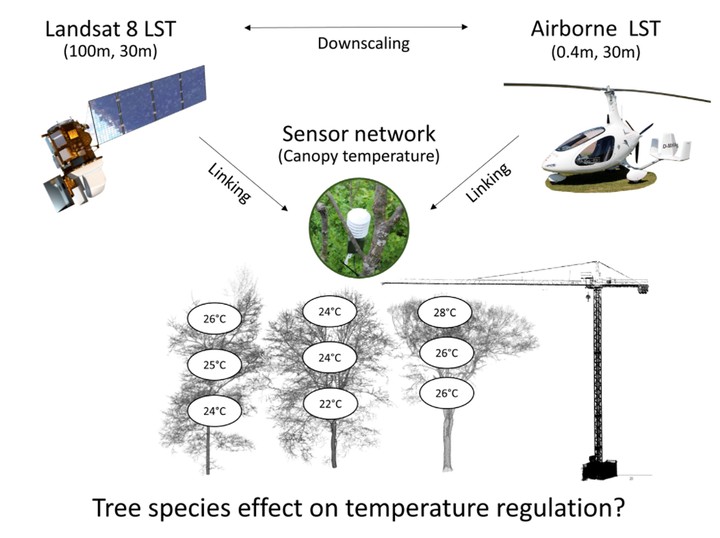Detecting Tree Species Effects on Forest Canopy Temperatures with Thermal Remote Sensing: The Role of Spatial Resolution

Abstract
Canopy temperatures are important for understanding tree physiology, ecology, and their cooling potential, which provides a valuable ecosystem service, especially in urban environments. Linkages between tree species composition in forest stands and air temperatures remain challenging to quantify, as the establishment and maintenance of onsite sensor networks is time-consuming and costly. Remotely-sensed land surface temperature (LST) observations can potentially acquire spatially distributed crown temperature data more efficiently. We analyzed how tree species modify canopy air temperature at an urban floodplain forest (Leipzig, Germany) site equipped with a detailed onsite sensor network, and explored whether mono-temporal thermal remote sensing observations (August, 2016) at different spatial scales could be used to model air temperatures at the tree crown level. Based on the sensor-network data, we found interspecific differences in summer air temperature to vary temporally and spatially, with mean differences between coldest and warmest tree species of 1 °C, and reaching maxima of up to 4 °C for the upper and lower canopy region. The detectability of species-specific differences in canopy surface temperature was found to be similarly feasible when comparing high-resolution airborne LST data to the airborne LST data aggregated to 30 m pixel size. To realize a spatial resolution of 30 m with regularly acquired data, we found the downscaling of Landsat 8 thermal data to be a valid alternative to airborne data, although detected between-species differences in surface temperature were less expressed. For the modeling of canopy air temperatures, all LST data up to the 30 m level were similarly appropriate. We thus conclude that satellite-derived LST products could be recommended for operational use to detect and monitor tree species effects on temperature regulation at the crown scale.